How to Scale Your Travel Agency with a Modern TravelTech Stack
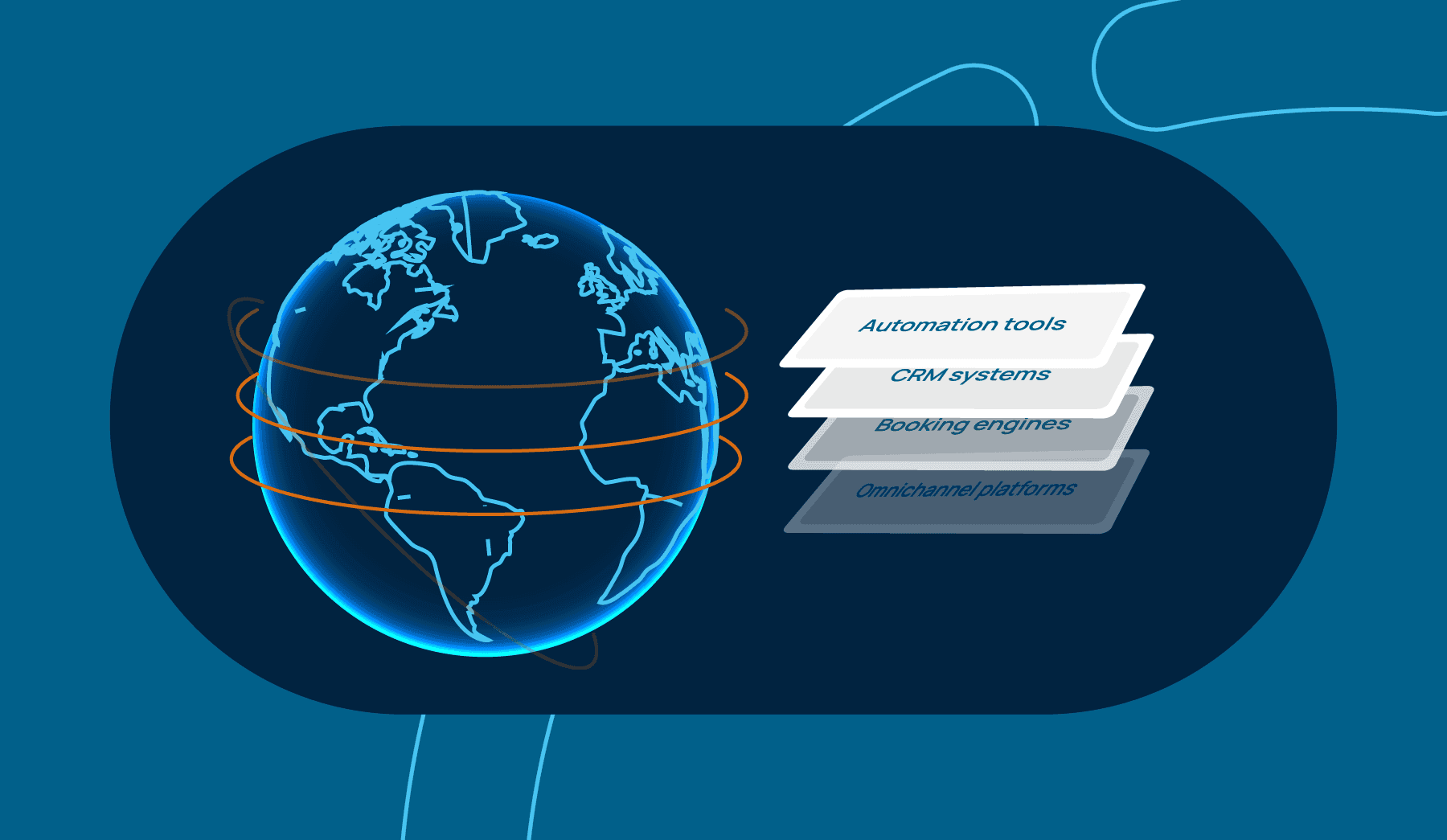
"You can’t sail into new waters with an anchor dragging behind you." If you run a forward-thinking travel agency, you already know this – the travel booking game has changed. Just so you know, 70% of the travel sales revenue globally came through the online sales channel. Travelers, whether they’re a corporate procurement officer booking annual incentive trips for 500 employees or a millennial couple planning a spontaneous escape to Bali, are no longer impressed by “available on request” or “we’ll confirm by tomorrow.” They expect real-time bookings, affordable pricing, and hyper-personalized offers.
Read this insight to discover how you can scale your travel agency by building a smart, resilient, and scalable travel technology stack.
Splurging Desperately yet Scaling like a Sloth?
A travel agency can invest in building the best sales team, the most exotic suppliers, and winning client goodwill – but if your technology is slow, fragmented, or opaque, your growth ceiling might be painfully low. If your agency still relies on legacy patchwork systems, outdated GDS-only models, and manually stitched itineraries, scaling isn’t just slow – it’s a threat to your survival.
As a travel agency, you’re competing against OTAs, AI-driven platforms, and agile boutique players who can quote, book, and upsell while you’re still waiting for a supplier’s email response. And that doesn’t look good. Of course, you know that.
Today, the difference between agencies that scale into new markets and those that stagnate in the status quo often comes down to one thing: The Agency’s TravelTech stack.
And no, we’re not talking about just “getting a booking engine.”
We’re talking about building an entire technology stack – a connected, data-rich, API-ready ecosystem that powers every part of your sales, service, and supply chain. From availing personalised insurance for your customers traveling to Patagonia to upselling seat upgrades at checkout, automating reconciliation, managing agents, and whatnot, your travelTech stack should be potent enough to take care of it all.
Scaling in Today’s Market is About 3 Simultaneous Challenges
- Managing exponentially more transactions without compromising service quality.
That means there is no scope for software downtime, whether it be your booking engine or accounting application. If your systems take minutes to fetch rates your competitors fetch in milliseconds, you’re not just slow, you’re invisible. And we are not exaggerating, this is the ground reality.
- Expanding product depth and variety without multiplying operational headaches or learning curve.
Without product innovation, customer stickiness is a tough nut to crack. But innovation shouldn’t introduce new product complexities, at least not for your customers. Adoption rates are directly proportional to how simple it is to get started with the product. If you don’t believe us, you must read the why behind WhatsApp’s design. As humans, we crave simple and easy solutions.
- Competing in real time with players who have automation and data on their side.
The more useful data you have at your disposal, the more tailored your personalisation strategy can be to keep the customers engaged and hooked. Your competition is hoarding customer data and engaging them with personalisation. You too can. You can leverage customer data and alternative data to build your moat around customer experience and value delivery.
And to address these challenges, you need state-of-the-art travel technology solutions for your agency; a stack that’s reliable, scales elastically with demand, accumulates minimal technical debt, and facilitates maximum innovation.
What Does a Modern Travel Technology Stack Look Like?
It’s an interconnected ecosystem designed to:
- Pull and aggregate inventory from multiple suppliers and aggregators in real time
- Deliver dynamic, competitive pricing across all sales channels
- Automate booking workflows end-to-end
- Provide actionable business intelligence
- Create seamless experiences for both customers and agents

Additionally, in an agency setup, it would also include the HRMS, finance & accounting, and team collaboration software. In this insight, we shall limit ourselves to discussing the stack for the core travel booking and travel operations management
1. Booking Engine & Mid-office Solution – Makes you Unstoppable

In a modern travel agency, reservation software, a.k.a. your booking engine, is the command center of your travel operation. It gives your agents or customers an interface to interact with your software and transact with the real-time-synced suppliers’ inventory.
When your booking system can tap into both mass-market and specialty suppliers instantly, you stop being “just another reseller” and start being the go-to agency for rare finds. Retail and corporate customers would drool over you. Okay, that was a metaphor.
The point is, your booking engine must be modular and scalable enough to accommodate any number of suppliers.
Today, you need to think beyond Global Distribution Systems (GDS), beyond borders. A decade ago, a single GDS feed was enough. Not anymore. Competitive agencies aggregate inventory from:
- Multiple GDSs (Amadeus, Sabre, Travelport)
- Bedbanks & wholesalers like Hotelbeds, Webbeds, and TBO Holidays
- Direct supplier APIs from airlines, hotel chains, and cruise lines
- Niche DMC systems for unique, high-margin experiences
Check out our API Gateway product for travel agencies. It helps you integrate 160+ travel suppliers at a blitz-fast speed – flight, hotel, bus, cab, and train APIs. You can launch all your contracted suppliers in about 3 days while saving 90% in integration costs and time.
However, multiplying your inventory is of no use if it’s not accessible.
So, of course, your booking engine must score decently on UX & CX KPIs. It must have frictionless search & discovery, recommendations, real-time inventory, minimal search to PNR steps, mobile-first, in-built wallet, and other critical booking engine features that contribute to a high conversion and engagement rate.
If you’re a B2B agency with a handful to 1000s of agents under your umbrella, you would need an admin dashboard to manage bookings, cancellations, and refunds. This dashboard should help you with commission tracking, agent management, and supplier management. Also, as the inventory becomes more diverse, it helps to have a margin/markup management feature under the supplier management software module. Plus, brownie points if it has inbuilt reporting features for sales, revenue, customer analytics, and agent growth.
You must check out our Online Booking Tool (OBT) and Mid-office solution for growth-obsessed travel agencies. It’s a quite strong booking engine designed to handle multi-city itineraries, fare families, upselling of ancillaries, and supports multiple currencies and languages. The integrated mid-office solution is equally comprehensive.
2. Intelligent CRM – Turns Data into Customer Delight
Scaling your travel agency is not just limited to more bookings/transactions; it’s also about increasing booking value per customer and reducing acquisition costs. This is exactly where Customer Relationship Management tools come into play. Traditionally, CRMs were treated merely as a “contact database.” But modern CRM tools are revenue generators. Today, travel-agency-focused CRMs go way beyond storing customer contact details—it’s the hub that connects travelers, corporate accounts, and the network of agents serving them.
- For retail or corporate-facing agencies
CRM centralizes traveler data, booking history, preferences, and loyalty memberships. This allows the travel agency to personalize offers, automate trip reminders, and run post-travel engagement campaigns that improve retention and customer lifetime value.
- For agencies operating at scale with thousands of sub-agents
CRM becomes a dual-purpose platform for such agencies. It not only manages end-customer relationships but also governs agent relationships.
Each agent or sub-agency needs access to their customer records, booking pipeline, and performance dashboards, while the parent agency maintains visibility across the entire network. Features like commission tracking, lead distribution, territory assignments, and compliance monitoring ensure that the business runs smoothly without losing oversight.
An integrated CRM in such setups must support multi-level hierarchies, role-based access, and white-label capabilities so that, if needed and allowed, travel agents can operate under their branding while still feeding into the parent agency’s data ecosystem.
3. Payment Gateway – Makes you a Cash Cow
Stumble on a wrong payment gateway and you would be gasping for cash. Payment friction is a scaling killer few talk about. Every extra step in checkout is a booking you may lose. And in B2B, delayed payment processes can choke cash flow and stall growth.
In travel, cash flow is everything, and the payment gateway is where revenue turns from promise to reality. A robust gateway integrated into your booking engine doesn’t just process payments; it unlocks new streams of revenue and reduces leakage.
- For retail and corporate-facing agencies, the essentials are secure multi-currency acceptance, PCI-DSS compliance, and support for global and local methods—credit cards, net banking, wallets, UPI, and even BNPL (Buy Now, Pay Later).
This flexibility directly impacts conversion, as travelers are more likely to complete a booking when their preferred payment method is available.
- For agencies with a sub-agent network, the gateway takes on another layer of importance: settlements and commissions. A well-architected system allows instant reconciliation of funds, automatic commission payouts to agents, and granular tracking of who sold what, when, and at what margin.
Parent agencies can set differential markups for different agent tiers, manage credit limits, or offer prepaid wallets so agents can top up and sell instantly without waiting for approvals.
This financial agility makes the parent agency the true “cash cow,” as it controls both upstream supplier payments and downstream agent settlements.
By blending security, flexibility, and intelligent financial management, the payment gateway becomes more than a transactional pipe. It evolves into a profit engine that maximizes liquidity, optimizes margins, and keeps every booking flowing smoothly through the agency’s ecosystem.
4. Analytics Software – Stop Rambling in the Wilderness of Guesswork
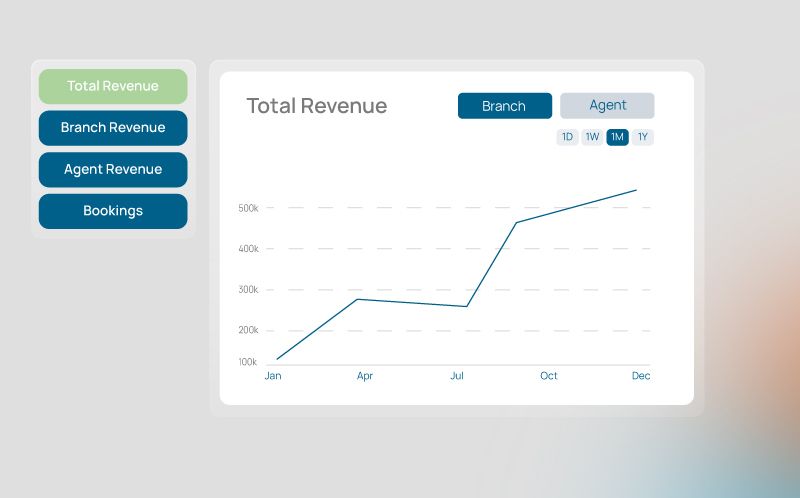
Today, in travel, margins are razor-thin and competition is unforgiving, which makes analytics and reporting software one of the most valuable tools in a technology stack.
For retail or corporate-facing agencies, analytics tools help
- Track booking trends, customer acquisition costs, and revenue performance by channel
- Identify which destinations are in demand, which campaigns drive conversions, and where customers are dropping off in the booking funnel
- Highlight customer lifetime value (CLV), repeat purchase behavior, and upsell potential, enabling smarter marketing and higher retention
For B2B2B agencies with thousands of sub-agent partners, analytics expand into performance management and network-wide visibility. Parent agencies use analytics tools for need granular insights into-
- Which agents are driving the most bookings?
- Which suppliers are underperforming?
- How do commission structures affect overall profitability?
Automated reporting tools can generate
- Agent-wise sales reports
- Settlement summaries
- Compliance metrics
All of this without any need for endless manual reconciliation. With role-based access, sub-agents get their dashboards to track targets, leads, and customer pipelines, while the parent agency retains a consolidated, 360-degree view of operations.
The real advantage lies in predictive intelligence. By layering AI-driven insights, agencies can forecast seasonal demand, adjust markups dynamically, and negotiate better supplier terms. Basically, analytics could help you make the right pricing, marketing, and expansion decisions. Without it, your raw booking data can’t be your competitive advantage.
5. Support & Communication Software – To Handhold Every Single Customer

The support and communication software suite in a travel agency’s technology stack is not just about answering queries; it’s about building a structured framework that connects every touchpoint, including agents, travelers, and suppliers, through a unified platform. At its core, this layer of the stack combines multi-channel communication APIs, ticketing systems, and workflow automation to ensure that issues are captured, routed, and resolved efficiently.
A modern stack includes helpdesk integrations (Zendesk, Freshdesk, ServiceNow) tied directly to the booking engine and CRM, so every interaction carries booking context–
- Who the traveler is
- What they purchased
- What stage of the journey they’re in
Communication middleware like Twilio, MessageBird, or Infobip powers SMS, WhatsApp, push notifications, and even in-app calls, ensuring consistency across channels.
For large networks of sub-agents,
- Role-based access in the support platform allows each agent to manage their customers while feeding data back into a central system where the parent agency retains oversight and analytics.
- Chatbots and AI assistants handle FAQs and repetitive tasks, while escalation rules pass complex cases to human agents with full conversation history intact.
- Integrated SLA tracking ensures accountability, and reporting dashboards highlight support efficiency, agent responsiveness, and customer satisfaction metrics.
Scaling Strategies for Modern Agencies
Scaling your travel agency is about compounding the value you reap from your travel technology stack. Leverage integrations to ship value faster and bring strategic differentiation. The travel agencies that win are those who architect growth like a cog system – automated, data-driven, and resilient. High-growth agencies blend operational discipline with digital innovation, ensuring that expansion doesn’t dilute customer experience or profitability. Here’s how you may leverage your travel technology stack to unlock multi-fold growth for your travel agency.
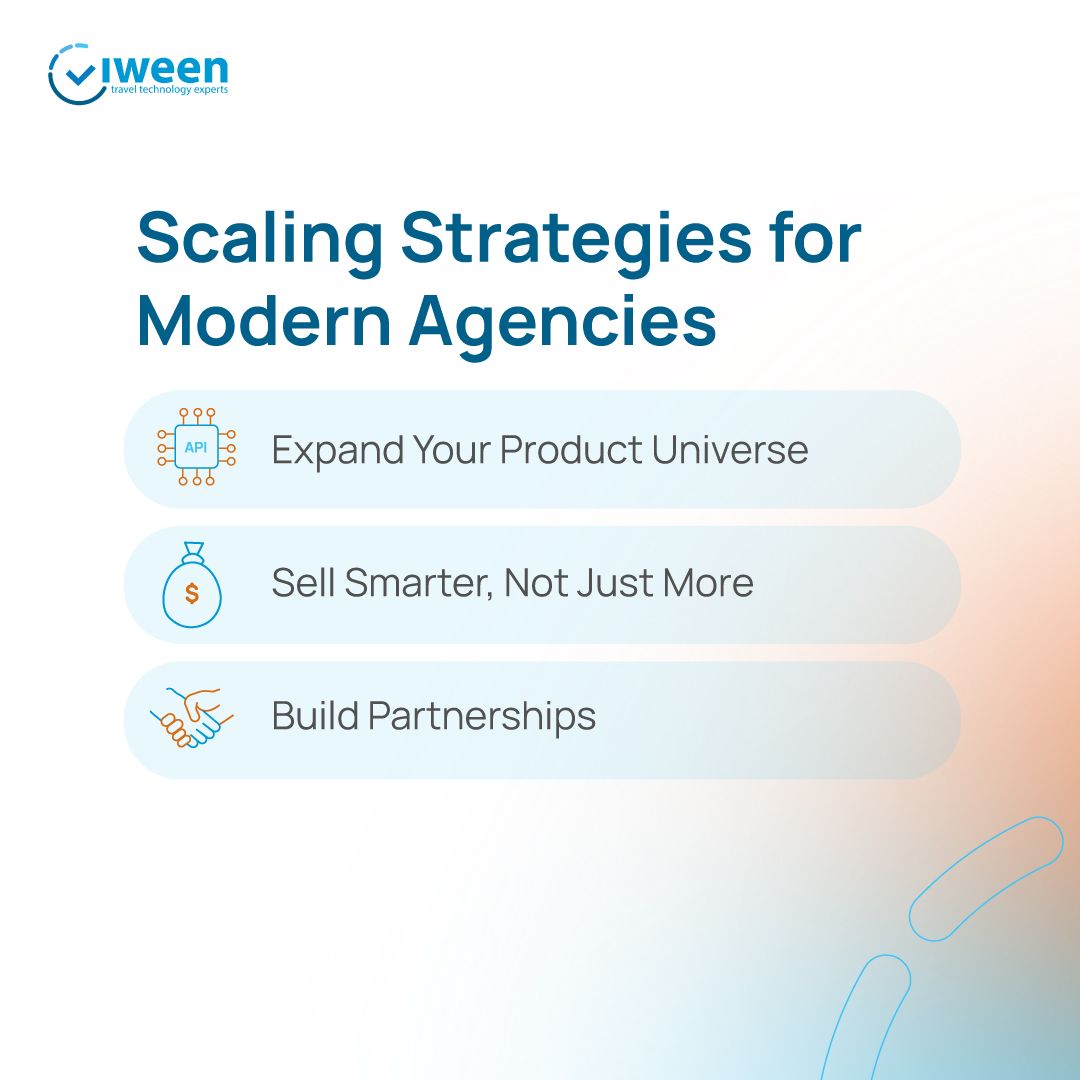
1. Productize and Differentiate the Offerings
If every agency sells the same flight tickets, hotel bookings, and packaged itineraries, then the market quickly becomes a race to the bottom on price. The agencies that truly scale and thrive are the ones that stop being just intermediaries and start becoming experience designers and product owners. This is where productization comes in–
- Stop selling “generic” tickets. Iween’s online booking tool equips you to tap into ancillaries to deliver augmented convenience for your end customers. Besides, this helps your agents rake in more revenue for you.
- Another way to differentiate your offerings is by owning niches: adventure tours, wellness retreats, corporate travel bundles, luxury honeymoons, or religious tourism.
- Use dynamic packaging engines that let you bundle flights, hotels, insurance, and activities into branded offerings, giving you margin control and differentiation.
2. Automate Your Operations, Don’t Just Add Headcount
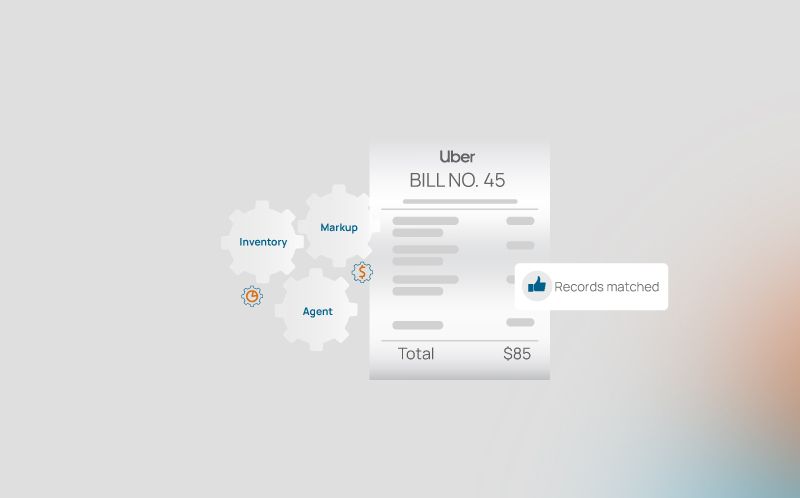
Most travel agencies follow a predictable pattern as they grow: the moment bookings increase, they hire more people. While this works in the short term, it’s a fragile model. More people mean more salaries, more training, more handholding—and ironically, more inefficiency. Modern agencies that scale without exploding their payroll do so by designing automation-first operations that handle repetitive work, while human teams focus on high-value customer interactions and strategy. So, you must replace repetitive back-office work (ticketing, refund processing, reconciliations) with workflow automation and RPA (Robotic Process Automation).
Retail travel agencies that directly deal with end-travellers need to understand that speed and experience are non-negotiable for their customers. And they must leverage automation to:
- Auto-generate branded itineraries the moment a booking is confirmed. No manual editing, no back-and-forth.
- Auto-trigger reminders for visa deadlines, payment installments, or pre-travel checklists. Agents should not be wasting time on such stuff.
- Design self-serve portals that let customers log in, check their bookings, request changes, and download invoices.
These would free your agents from repetitive queries and allow them to focus on upselling premium experiences.
And if you run a hybrid model, wherein you’re serving both direct customers and sub-agents, automation becomes even more critical because complexity multiplies. You’re no longer managing just your data but also syncing information across hundreds of agents. You can leverage automation in multiple ways-
- Instead of manually uploading contracts from airlines and hotels, use integrations that directly update fares and commissions into your system.
- Provide agents with smart booking engines that reflect real-time availability and pricing. This eliminates endless “rate check” calls and reduces booking errors.
- Auto-calculate agent commissions and push reports into their dashboards. No manual spreadsheets, no disputes, no chasing payouts.
- Broadcast flight delays, policy changes, or promotions instantly to thousands of sub-agents via SMS, WhatsApp, or API-linked platforms.
Intelligent automation will help you improve productivity, efficiency, and accuracy – all contributing to your top and bottom line.
3. Build Scalable Customer Acquisition Engines
For decades, travel agencies grew through referrals, word of mouth, and repeat customers. While these remain powerful, modern growth demands something more, i.e., a customer acquisition engine that scales predictably, profitably, and independently of an owner’s network.
The challenge is that most agencies still treat acquisition as ad hoc campaigns or seasonal bursts of marketing. The winners, however, are engineering repeatable systems that continuously attract, nurture, and convert travelers or partner agents at scale. Here are some ideas-
- Performance marketing (meta search, social ads, retargeting)
- Content-driven inbound funnels (SEO, travel blogs, destination guides)
- Partnership APIs with OTAs, aggregators, and corporate booking tools for indirect demand
- Implement attribution analytics so every marketing dollar can be tied back to actual revenue
- Launch referral and loyalty programs
- API-first distribution to make it seamless for sub-agents or OTAs to plug in and sell inventory
- Add a partner portal with self-serve onboarding functionality to your stack
- Create tiered incentive programs for agents
4. Integrations — Put the Cogs in Action
High-growth travel agencies thrive on seamless integrations. You need to connect every piece of the puzzle into one intelligent, revenue-generating engine. Not just travel agencies, almost every industry niche today is riding the integration waves, esp the ones that are in a cut-throat competition space.
Your travel technology stack needs to be hyper-connected with each other. No booking engine or CRM works effectively in isolation. Integrations ensure that data flows effortlessly across the stack, reducing silos, enhancing accuracy, and enabling automation at scale.
Here are the critical integrations every ambitious travel agency must consider:
Integration Type | Examples | Purpose / Benefits |
Global Distribution Systems (GDS) | Amadeus, Sabre, Travelport | Access to flights, hotels, car rentals, and cruises worldwide. Real-time availability and pricing. |
Booking Engines & OTAs | Expedia, Booking.com, Airbnb | Expand inventory, diversify offerings, capture new customer segments. |
Payment Gateways | Stripe, PayPal, Razorpay, Adyen | Secure, multi-currency, global payments with fraud prevention. |
CRM & Marketing Automation | HubSpot, Salesforce, Zoho, Mailchimp | Manage leads, personalize campaigns, automate follow-ups, and build loyalty. |
Analytics & BI Tools | Google Analytics, Tableau, Power BI | Data-driven insights, performance dashboards, predictive booking patterns. |
Customer Support & Communication | Zendesk, Intercom, WhatsApp Business, Twilio | Omni-channel support (chat, call, SMS), automated alerts, 24/7 responsiveness. |
Travel APIs | Skyscanner API, Rome2Rio, Google Maps | Enrich experience with itineraries, route planning, and local information. |
Accounting & ERP Systems | QuickBooks, NetSuite, Tally | Automate invoicing, reconciliation, and financial compliance. |
Loyalty & Rewards Systems | Collinson, Loylogic | Retain customers with points, miles, and membership perks. |
Content & CMS Platforms | WordPress, Drupal | Easy content publishing, SEO optimization, and landing pages for offers. |
Insurance & Ancillary Services | Allianz, AXA, Cover Genius | Offer travel insurance, add-ons like luggage protection, and seat selection. |
Fraud & Compliance Tools | Riskified, Kount, Trulioo | Reduce chargebacks, enable KYC, and AML compliance for international bookings. |
Collaboration & Workflow Tools | Slack, Trello, Asana, MS Teams | Internal coordination, task tracking, seamless remote work. |
AI & Personalization Engines | Dynamic pricing tools, chatbots, and recommendation engines | Tailor offers, upsell intelligently, and increase conversion. |
5. Establish a Data-Driven Decision Culture
Most travel agencies collect data, but very few live by it. Adopting an analytics tool is step 1. But the real impact comes when there is a cultural shift in your travel agency, where every major decision, from sales campaigns to supplier negotiations, is guided by data rather than instinct. Analytics dashboards and BI tools are useless if they remain the domain of a few analysts. For your travel agency, speed and margins are critical. And so, data must flow across all departments, then it be sales, marketing, operations, finance, or partnerships. Your team should not just glance at reports but ask, “What is the data telling us to do differently tomorrow?”
Here’s what you can do to make cultural shifts or tweaks:
- Standardize performance metrics: Everyone in your agency must speak the same language– conversion rate, cost per lead, yield per trip, repeat booking ratio, and so on.
- Move beyond vanity metrics (website traffic, social likes) to revenue-linked attribution. Flirt with data to find out answers to questions like:
- Which channels deliver real conversions?
- Which partnerships increase wallet share per customer?
- Use forecasting models to anticipate seasonal demand, traveler behavior, and pricing trends. See them in tandem with last quarter’s numbers, and then put analytical brains to work for marinating strategies that could deliver better results.
- Train staff and agents to use dashboards, not just managers.
- Build weekly “data huddles” where decisions are debated with evidence.
- Celebrate wins driven by insights. For example, if a team catches an emerging destination trend early. This helps teams see the power of analytics firsthand.
You must stop wasting effort on gut-based campaigns or supplier hunches and rather create a culture where every strategy is validated, refined, or killed based on proof. That’s how you scale without bleeding margins.
6. Expand Through Partnerships and Ecosystems
Strategic partnerships can unlock new markets, diversify supply, and strengthen credibility. If you aspire to be a high-growth travel agency, you need to make friends in the wild, tap into wider travel ecosystems:
- For retail agencies, this might mean alliances with niche DMCs (Destination Management Companies), regional airlines, or curated local experience providers.
- For B2B agencies, the play extends to forming tech alliances (API providers, fintech for split-payments, insurance), white-label platforms for smaller agencies, or consortium memberships.
Build win-win agreements: exclusive deals, data sharing, or co-marketing partnerships. Think less “vendor-client” and more “ecosystem contributor.” Remember, a strong ecosystem creates moats: competitors can copy your packages, but not your distribution network or bundled value chain. That comes only with long-term genuine partnerships.
7. Build Scalability Into Customer Support
Scaling agencies often crash under the weight of rising customer inquiries. Throwing more agents into call centers doesn’t scale; automated, omnichannel support does. Integrate awesome support and communication software into your tech stack. Invest in-
- AI-powered chatbots
- Multilingual knowledge bases
- Proactive notifications (flight changes, visa reminders)
For B2B and agent models, build tiered support: self-serve portals for routine queries, dedicated account managers for high-value partners.
8. Prepare for Globalization Early

Even if you’re starting local, globalization should not be an afterthought. Think global, act modular. Build your systems so they can plug into new geographies without a total overhaul. Agencies that prepare early for globalization can flip the switch faster when opportunity arises—whether it’s a new inbound tourism wave or opening an overseas B2B channel.
Currency conversion, multilingual websites, regional compliance (GDPR, PCI-DSS, IATA rules), and local payment gateways need to be architected into the tech stack from the very start.
The Pitfalls of Tech-Enabled Scaling
The biggest pitfalls in tech-enabled scaling aren’t about the tools in your travel technology stack, but how they’re adopted. Many agencies fall into shiny object syndrome, chasing trendy platforms without evaluating whether they solve business problems. Others invest in powerful systems but skimp on training, leaving employees with a Ferrari in a beginner’s garage; expensive, underutilized, and frustrating. And perhaps most critically, agencies often ignore change management; without clear communication and reassurance, staff may resist automation out of fear of redundancy.
Leaders must remember that scaling with technology is as much about people and processes as it is about software.
Scale Your Travel Agency with Iween
By now, you must have sensed that scaling your travel agency requires more than adding destinations or agents. It’s about creating a technology backbone that can handle growth with ease and facilitate agents to serve the clientele with great operational efficiency. That’s exactly where Iween steps in:
- With Iween’s API Gateway, you instantly unify 160+ suppliers—flights, hotels, rail, cabs, buses—into one intelligent feed that can be integrated into your online booking tool. This way, there is no more wasted developer hours and delayed time-to-market; your team gets a single, streamlined system that opens up the world to your customers. And did we mention, our API Gateway saves 90% in integration costs and time?
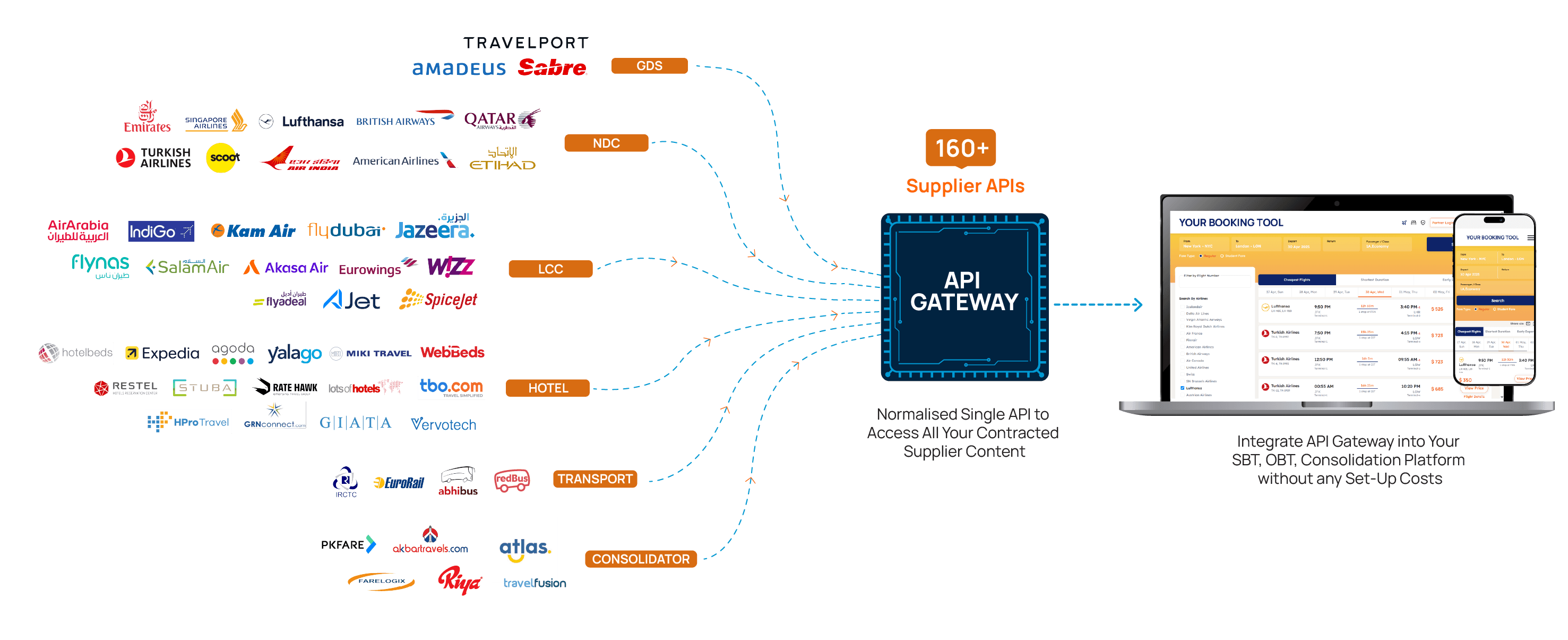
- Iween’s Booking Engine ensures your agents/clients enjoy a frictionless booking experience, while the Mid-office System takes care of the heavy lifting—automation, reconciliation, and reporting—so your staff can focus on customer relationships instead of repetitive tasks.
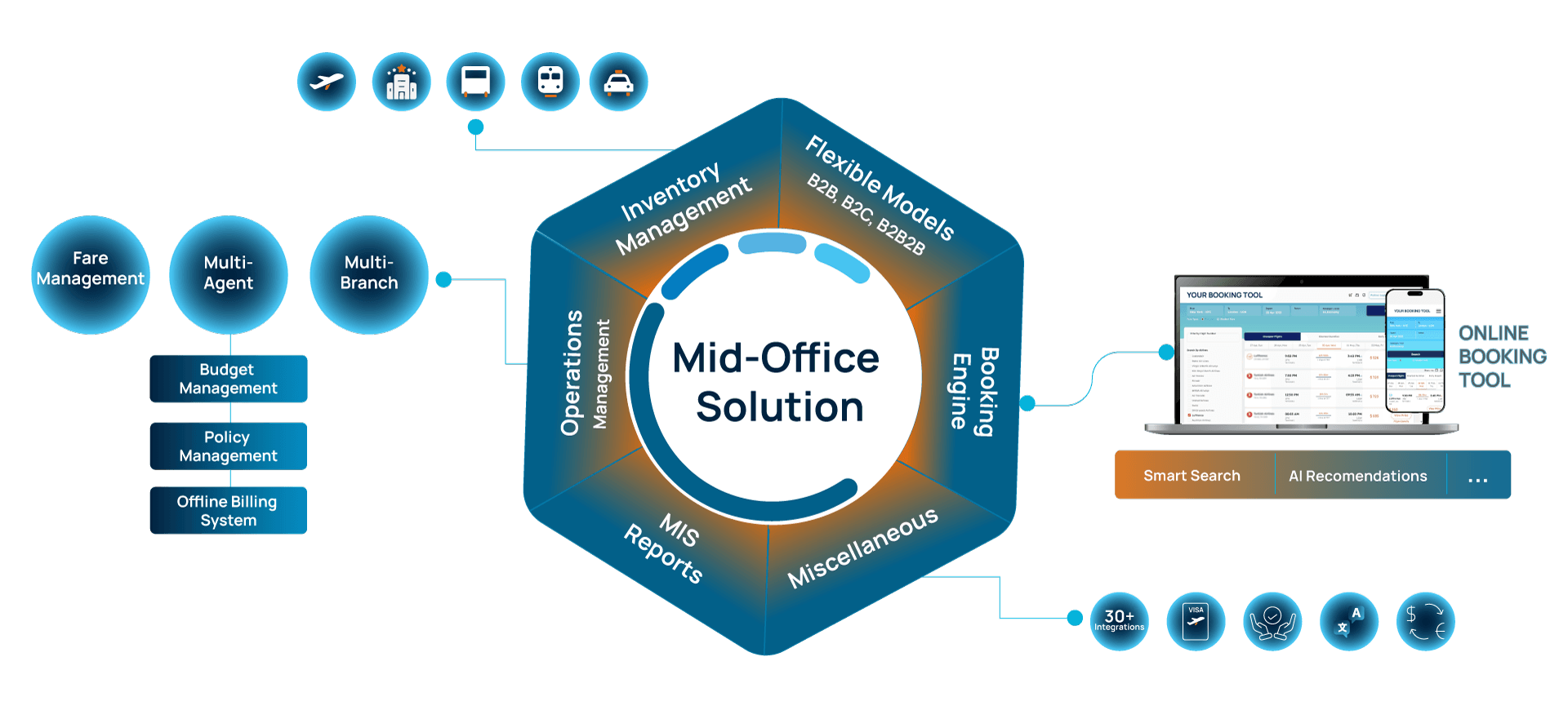
Together, these products help you scale with confidence. From supplier management to agent management and customer experience, Iween builds the infrastructure that empowers your agency to handle more clients, more bookings, and more opportunities without missing a beat.
Explore Iween — Travel Technology Experts.

Nishant Choudhary
Content MarketerIn this article
1.Splurging Desperately yet Scaling like a Sloth?
2.What Does a Modern Travel Technology Stack Look Like?
3.Scaling Strategies for Modern Agencies
4.The Pitfalls of Tech-Enabled Scaling
5.Scale Your Travel Agency with Iween



